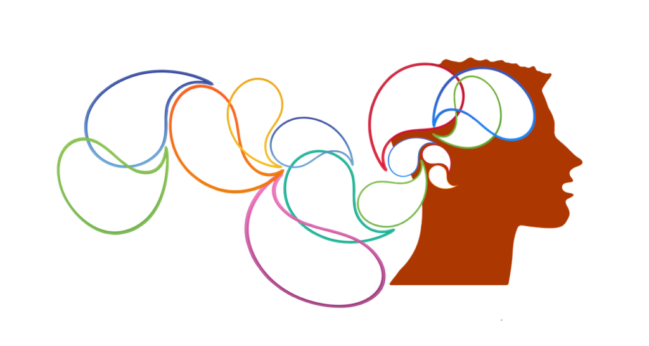Blog
What is Cognitive Behavioural Therapy?
October 18, 2018
4 minutes, 54 seconds

Cognitive behavioural therapy is defined as “a type of psychotherapy in which negative patterns of thought about self, others and the world are challenged in order to alter unwanted behaviour patterns or treat mood/anxiety disorders”.
History of the Cognitive Behavioural Therapy
CBT was founded by DR Aaron Beck in the 1960s, while he was a psychiatrist . DR Beck had studied and practiced psychoanalysis. Carrying out a number of experiments Dr Beck was hoping to validate his psychoanalytical concept of depression, however he found out the opposite.
These results influenced him to look for ways of conceptualising depression and he found out depressed clients had a string of negative thoughts that arose spontaneously. Dr Beck called these "automatic thoughts", which fell into 3 categories: negative thoughts about themselves, the world or the future.
Dr Beck began to help clients identify and evaluate these automatic thoughts and in doing this, they were able to think more realistically with an end result of them feeling better emotionally and behaving more functionally. When clients changed their underlying assumption about themselves, others or the world, the therapy resulted in long lasting change.
In a nutshell, CBT aims to change our thought patterns, the beliefs we may or may not know we hold, our attitudes and our behaviour in order to help us face our difficulties and strive towards our goals.
CBT is a very hands-on approach that requires investment from the client and the therapist. It has to be done willingly and actively, working collaboratively to identify the problems the client is facing and coming up with new strategies for addressing them, creating more positive solutions.
Identifying cognitive distortions
Cognitive distortions are inaccurate thoughts that reinforce negative thought patterns or emotions, basically faulty ways of thinking. Here are some examples: filtering (ignoring positive, focusing on the negative), black or white thinking (all or nothing thinking, seeing no grey), over-generalisation ( taking a single incident and using it as a sole piece of evidence), jumping to conclusions (being sure of something without any evidence), catastrophizing (worst thing will happen), should statements (about how we should behave ), emotional reasoning (if we feel in a certain way it will be true).
Helping clients in identifying that is a valuable tool in the application of cognitive behavioural therapy. There are many tool sheets on the Internet that you can give to clients to help with aiding memory when you first introduce this concept.
Useful CBT techniques and tools to put into your therapy tool box
Journaling
This technique is about gathering data about the mood, thoughts and sources of distres, along with the response (behaviour) in the situation. This will help you and your client identify thought patterns/distortions and current coping style.
Cognitive restructuring
This is when identification of distorted thinking has happened, you and a client can begin to challenge it. For instance, if your client believe they wouldn't get a promotion despite having experience and qualifications, they feel not good enough, or too stupid for the promotion. Instead of accepting this belief that leads to negative thoughts, they could take the opportunity to see what makes someone good enough. A CBT tool used here could be an automatic thought record. These can be downloaded from the Internet. Firstly looking at a situation, in another column looking at feelings and then picking a hot thought to challenge the facts that support the hot thought and facts that do not, then ending by coming up with an alternative balance thought.
Interoceptive exposure
This technique is intended to treat anxiety, in particular panic. It involves exposure to the feared bodily sensations in order to elicit the response a client would report being fearful of. In therapy this exercise is continued until the client habituates to the sensation and learns that they can experience this knowing that nothing bad will happen. Some ways to bring on different sensations are: running on the spot (racing heart), looking directly into a light (depersonalisation) and hyperventilating (shortness of breath). Also check the client has nothing medically wrong with them before carrying this out.
Cognitive restructuring
Using Socratic questioning with a client help them to challenge their negative thoughts. This can be done through the automatic thought record or through a basic 5 part model, where you are highlighting how a situation brings on feelings, bodily sensations and then results in a behaviour which is not always helpful.
Behavioural experiments
Here a CBT therapist likes to engage in challenging the"What if?".
The therapist helps the client identify the hot thought they would feel within a difficult situation or a situation they are avoiding and then plan to set up an experiment to test it out. Together, troubleshooting for what could go wrong or might go wrong in order to help the client achieve, rather than setting themselves up for failure.
Education and homework
Educating your client on what they seem to be presenting to therapy with is one of the first tools a CBT therapist will do. This helps normalise things for the client and help them feel like they are not going mad. Another important aspect of CBT is homework, whilst the word can be off putting, it is a big element of this approach. Setting tasks and techniques for your client throughout the week is important to help them grow and become their own therapist. It also highlights whether the motivation is present for this particular type of therapy.
These are some helpful tools which you could use on yourself and begin to introduce into therapy, if you are not already doing so. Try the tools out, you will be surprised at how they can work.